Ever wondered what Fruits start with “O”? We’ve compiled a complete list for you, including origin details, health benefits and uses in cooking. Dive in to discover the ‘O’ fruits!
The world of Fruits is vast and diverse, offering a delightful array of flavors, textures and colors. Among this assortment, there’s a unique group of fruits that share a common characteristic—they all begin with the letter “O.” In this blog article, we’ll embark on a tasty journey to explore and uncover the fascinating world of “O” fruits. From familiar favorites to exotic delights, we’ll provide a comprehensive list and delve into the unique qualities of each fruit. So, get ready to expand your fruit horizons and discover a whole new world of deliciousness as we dive into the ultimate guide to “O” fruits!
1. Orange

Here’s a concise information chart about oranges:
| Aspect | Information |
|---|---|
| Name | Orange |
| Scientific Name | Citrus sinensis |
| Origin | Southeast Asia, particularly China |
| Family | Rutaceae |
| Nutritional Value | High in Vitamin C, fiber and antioxidants |
| Taste | Sweet and tangy, with a citrusy flavor |
| Varieties | Numerous, including Valencia, Navel and Blood Orange |
| Season | Typically harvested in winter to early spring |
| Uses | Eaten fresh, juiced or used in cooking and baking; also used to flavor beverages and desserts |
| Cultivation | Grows in subtropical to tropical climates, prefers well-drained soil and ample sunlight |
| Health Benefits | Supports immune function, aids digestion and promotes heart health |
| Fun Fact | Oranges were historically considered a luxury due to their exotic origin, but are now one of the most commonly consumed fruits worldwide. |
Oranges are undoubtedly one of the most well-known and beloved “O” fruits. These citrus fruits are packed with sweetness and a burst of tangy juice. Orange Fruit come in two main varieties: sweet oranges, which include navel and Valencia oranges, commonly enjoyed as fresh fruit or juice; and bitter oranges, such as Seville oranges, used primarily for marmalades and flavoring. Rich in vitamin C and antioxidants, oranges are a nutritious and refreshing treat.
2. Olive

Here’s a concise information chart about olive fruit:
| Aspect | Information |
|---|---|
| Name | Olive Fruit |
| Scientific Name | Olea europaea |
| Origin | Mediterranean region, specifically Greece and Italy |
| Family | Oleaceae |
| Nutritional Value | High in monounsaturated fats, Vitamin E and antioxidants |
| Taste | Bitter when raw, with a complex flavor when processed into oil or brined |
| Varieties | Numerous, including Kalamata, Manzanilla and Arbequina |
| Season | Typically harvested in late summer to early winter |
| Uses | Processed into olive oil, eaten as table olives or used in cooking and salads |
| Cultivation | Grows in Mediterranean climates, prefers well-drained soil and ample sunlight |
| Health Benefits | Supports heart health, reduces inflammation, and may help lower cholesterol |
| Fun Fact | Olive trees are known for their longevity, with some specimens living for thousands of years. |
Olive Fruit may be more commonly associated with savory dishes, but they are indeed a fruit! These small, oval-shaped fruits are a staple of the Mediterranean diet and are often enjoyed as a tasty appetizer or ingredient in salads and pizzas. Olives have a distinctively salty and briny flavor, with a firm yet juicy texture. They come in various colors, including green, black and purple and can be purchased pitted or unpitted. While typically cured or pickled before consumption, fresh olives straight from the tree have a bitter taste.
3. Oat Apple
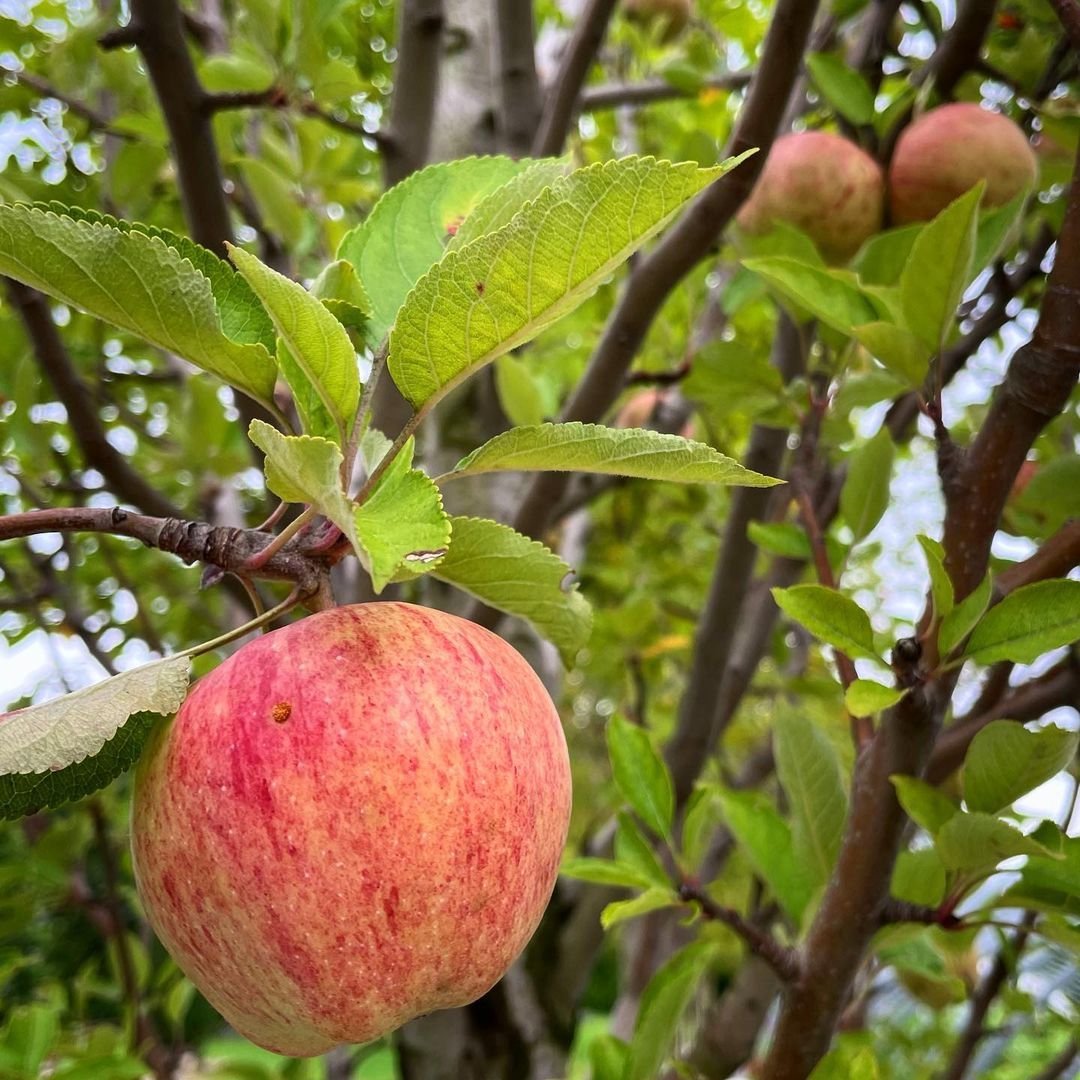
Here’s a concise information chart about Oat Apple:
| Aspect | Information |
|---|---|
| Name | Apple |
| Scientific Name | Malus domestica |
| Origin | Central Asia, specifically Kazakhstan |
| Family | Rosaceae |
| Nutritional Value | High in fiber, Vitamin C and various antioxidants |
| Taste | Sweet or tart, depending on the variety |
| Varieties | Thousands of varieties, including Granny Smith, Fuji, Gala and Red Delicious |
| Season | Typically harvested in late summer to early autumn |
| Uses | Eaten fresh, used in cooking, baking and making juice or cider; also used in salads and desserts |
| Cultivation | Grows in temperate climates, prefers well-drained soil and ample sunlight |
| Health Benefits | Supports heart health, aids digestion, and may help regulate blood sugar levels |
| Fun Fact | Apples are one of the most widely cultivated and consumed fruits globally, with a rich history in folklore and mythology. |
The oat apple, also known as the Chilean guava or strawberry myrtle, is a small, edible fruit native to South America. These “oat-shaped” apples grow on an evergreen shrub and offer a unique flavor profile that blends strawberry and apple notes. Oat apples are typically enjoyed fresh, adding a sweet and tangy twist to salads, desserts or even savory dishes. They are also used to make jams and preserves, showcasing their versatility in the kitchen.
4. Olallieberry
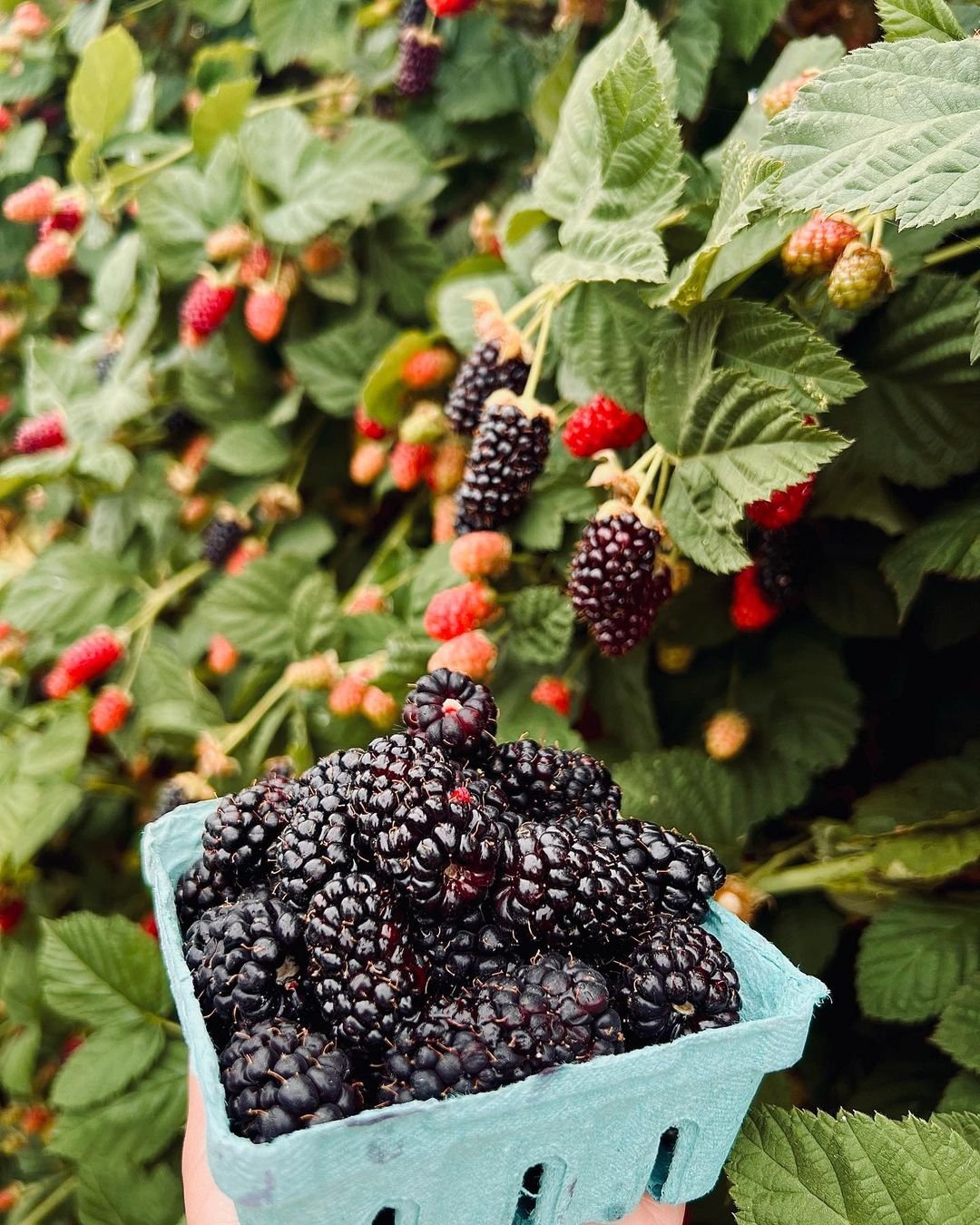
Here’s a concise information chart about olallieberry:
| Aspect | Information |
|---|---|
| Name | Olallieberry |
| Scientific Name | Rubus ursinus x Rubus idaeus |
| Origin | United States, specifically Oregon and California |
| Family | Rosaceae |
| Nutritional Value | Rich in Vitamin C, fiber and antioxidants |
| Taste | Sweet and tart, with flavors reminiscent of blackberries and raspberries |
| Varieties | Olallieberry is a hybrid of two species of blackberry and raspberry |
| Season | Typically harvested in summer, from late June to early August |
| Uses | Eaten fresh, used in jams, jellies, pies and other desserts |
| Cultivation | Grows in temperate climates, prefers well-drained soil and ample sunlight |
| Health Benefits | Rich in antioxidants, supports immune function and aids digestion |
| Fun Fact | Olallieberries are named after the Chinook word “olallie,” meaning berry. |
A hybrid berry with a unique name and an even more unique flavor, the olallieberry is a cross between the loganberry and youngberry. This dark purple berry is a true taste sensation, combining the sweetness of raspberries with a hint of tartness from blackberries. Olallieberries are often used in pies, jams and baked goods, adding a burst of flavor to any dish. They are grown primarily on the West Coast of the United States, particularly in California, where they thrive in the mild climate.
5. Osage Orange
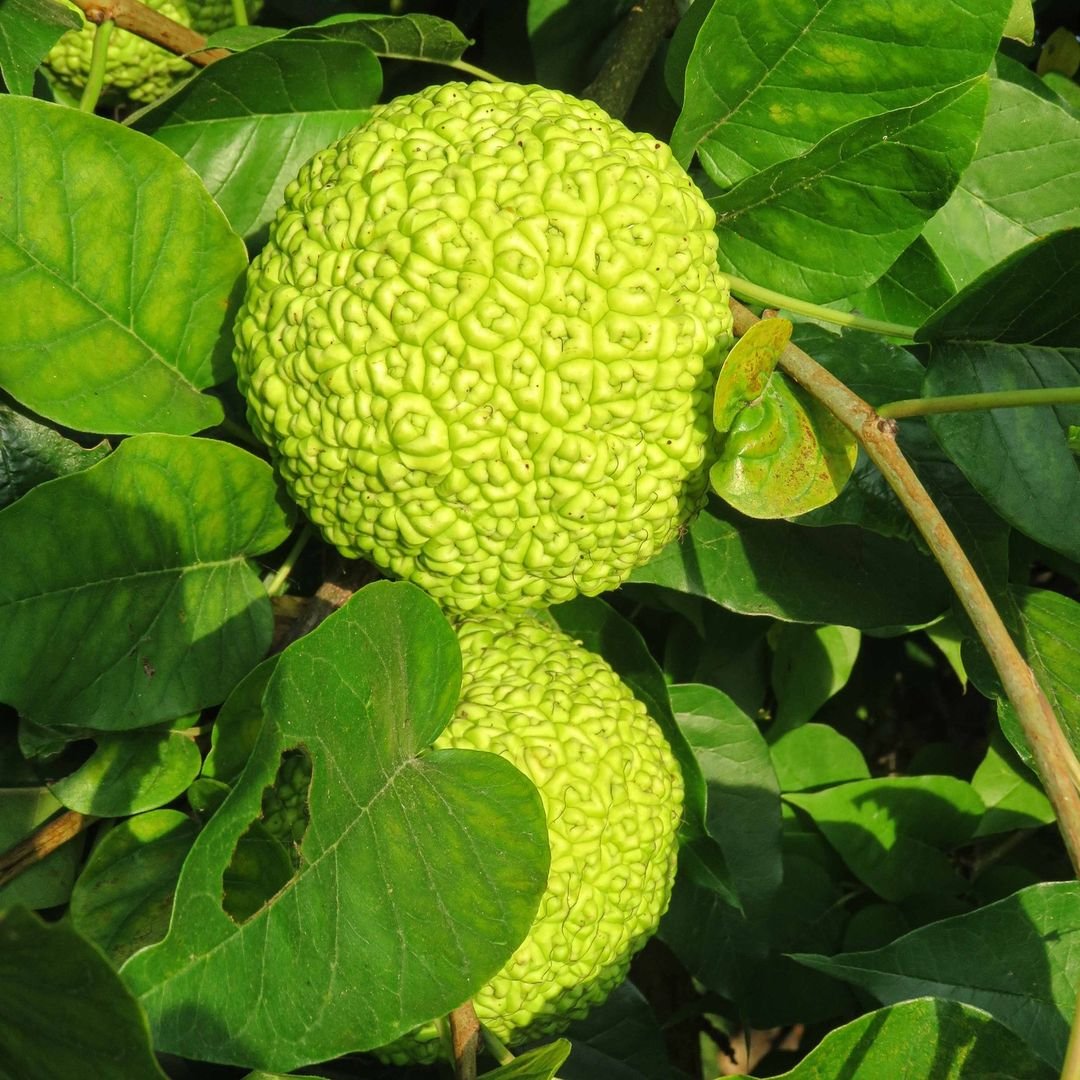
Here’s a concise information chart about Osage Orange:
| Aspect | Information |
|---|---|
| Name | Osage Orange |
| Scientific Name | Maclura pomifera |
| Common Names | Hedge apple, horse apple, bodark |
| Origin | Central United States, specifically the Osage Plains region |
| Family | Moraceae |
| Nutritional Value | Not typically consumed by humans due to its bitter taste and potential toxicity |
| Taste | Bitter and inedible, primarily used by wildlife |
| Uses | Historically used for hedgerows and as a natural insect repellent; sometimes used in crafts or as a natural dye |
| Cultivation | Grows in a wide range of soils, tolerant of drought and poor soil conditions |
| Health Benefits | Limited research on health benefits for humans, primarily valued for its utility in wildlife habitats |
| Fun Fact | Despite its name and appearance, Osage Orange is not closely related to oranges and is not edible for humans. |
Native to the central and southern United States, the Osage orange is a large, roundish fruit that resembles a brain in appearance. Despite its name, this fruit is not related to the common orange. Osage oranges were once widely used by Native Americans for a variety of purposes, including as a natural dye and for making bows. Today, they are primarily valued for their ornamental qualities, as the fruits add a unique touch to autumnal displays with their bright yellow-green color.
6. Oregon Grape
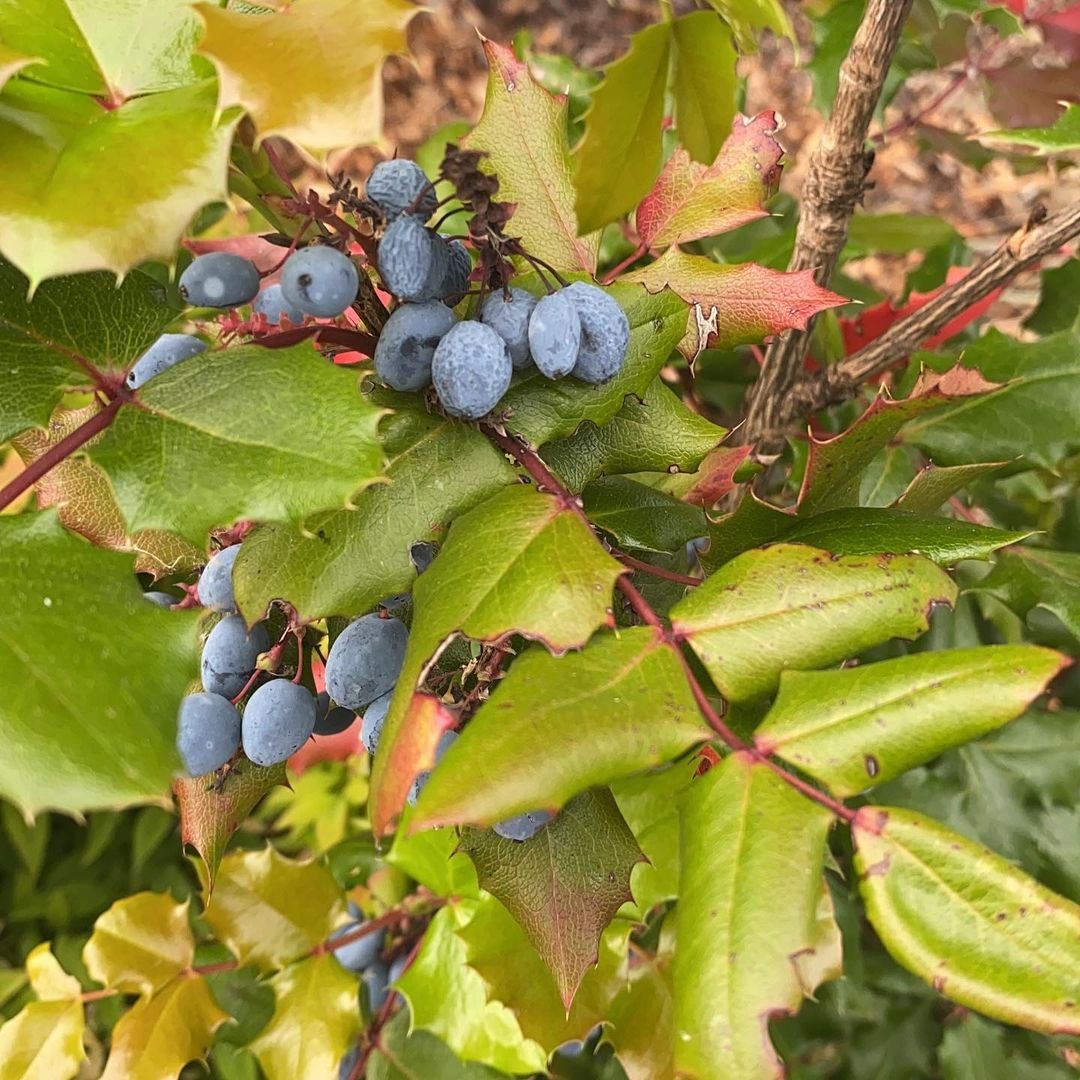
Here’s a concise information chart about Oregon Grape:
| Aspect | Information |
|---|---|
| Name | Oregon Grape |
| Scientific Name | Mahonia aquifolium |
| Family | Berberidaceae |
| Native to | Western North America, particularly the Pacific Northwest |
| Appearance | Evergreen shrub with holly-like leaves and clusters of small, dark purple berries |
| Uses | Medicinal purposes, culinary uses and ornamental landscaping |
| Health Benefits | Rich in berberine, which may have antimicrobial, anti-inflammatory and antioxidant properties; historically used by Indigenous peoples for various ailments |
| Culinary Uses | Berries can be used to make jams, jellies and wine; young leaves are edible and can be used in salads or as a tea |
| Cultivation | Tolerant of various soil types, prefers partial shade to full sun |
| Ornamental Uses | Valued for its attractive foliage and bright berries, often used in gardens and landscapes |
| Fun Fact | Despite its name, Oregon Grape is not closely related to grapes; the berries are tart and acidic, resembling grapes only in appearance. |
The Oregon grape, also known as the holly-leaved barberry, is a berry-producing shrub native to the Pacific Northwest region of North America. The plant gets its name from the clusters of small, round, purple-black berries that resemble large grapes. Oregon grapes have a tart and tangy flavor, making them perfect for jams, jellies and sauces. In addition to their culinary uses, the vibrant yellow flowers and colorful berries of the Oregon grape add visual appeal to landscapes and gardens.
7. Oriental Persimmon
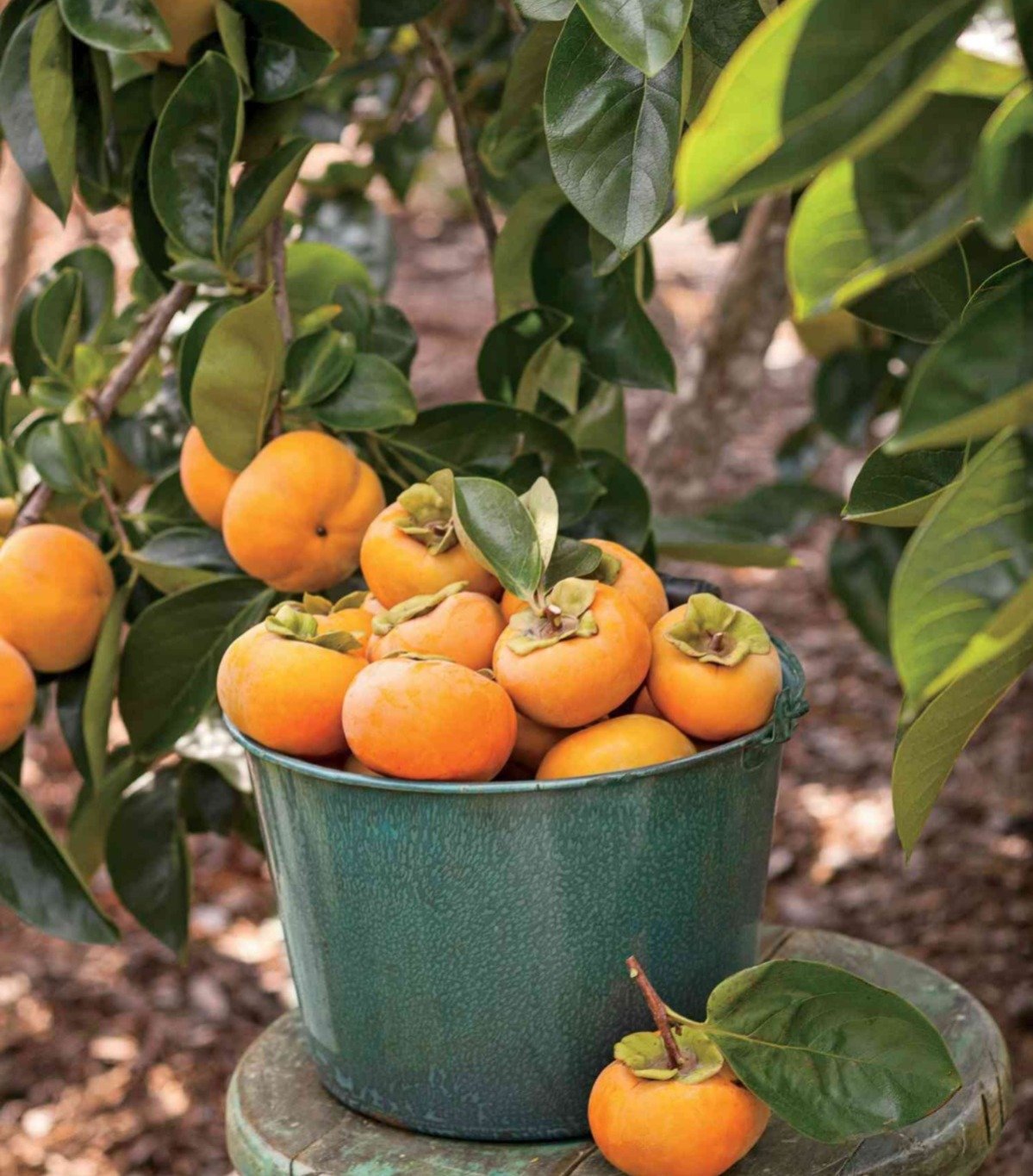
Here’s a concise information chart about Oriental Persimmon fruit:
| Aspect | Information |
|---|---|
| Name | Oriental Persimmon |
| Scientific Name | Diospyros kaki |
| Family | Ebenaceae |
| Origin | East Asia, particularly China and Japan |
| Varieties | Various cultivars, including Fuyu, Hachiya and Jiro |
| Appearance | Round or oval-shaped fruit, typically orange or reddish-orange when ripe |
| Taste | Sweet and flavorful, with a texture similar to papaya or mango |
| Season | Typically harvested in late autumn |
| Uses | Eaten fresh, dried, or cooked; commonly used in desserts, jams and sauces |
| Cultivation | Thrives in temperate climates, prefers well-drained soil and full sunlight |
| Health Benefits | Rich in Vitamin A, Vitamin C, fiber and antioxidants |
| Fun Fact | Oriental Persimmons are classified into two main types: astringent varieties, which are bitter until fully ripe and non-astringent varieties, which can be eaten while still firm. |
The oriental persimmon or simply persimmon, is a sweet and flavorful fruit native to East Asia. These orange-hued fruits have a delicate, creamy texture and a taste that is often likened to a cross between a peach and a mango. Persimmons are typically allowed to ripen until they reach a jelly-like consistency, at which point they can be enjoyed fresh or used in baked goods, purees or even dried. Rich in vitamins and antioxidants, persimmons are a nutritious and delicious treat.
8. Oro Blanco Grapefruit
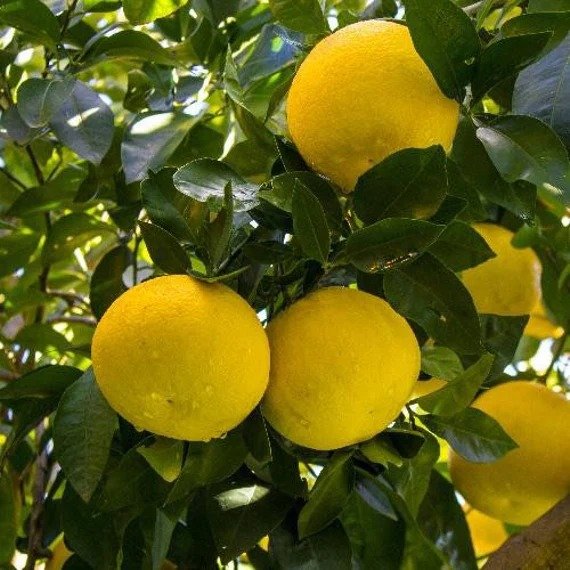
Here’s a concise information chart about Oro Blanco grapefruit:
| Aspect | Information |
|---|---|
| Name | Oro Blanco Grapefruit |
| Scientific Name | Citrus paradisi x Citrus grandis |
| Family | Rutaceae |
| Origin | United States, specifically California |
| Appearance | Large, round citrus fruit with yellow-green skin |
| Taste | Sweet and slightly tart, with a mild grapefruit flavor |
| Season | Typically harvested in winter to early spring |
| Uses | Eaten fresh, juiced or used in salads and desserts |
| Cultivation | Grows in subtropical to tropical climates, prefers well-drained soil and ample sunlight |
| Health Benefits | Rich in Vitamin C, fiber, and antioxidants |
| Fun Fact | Oro Blanco grapefruit is a hybrid variety, known for its low acidity and sweet flavor, making it popular for those who find traditional grapefruits too tart. |
The Oro Blanco grapefruit is a unique and delightful citrus fruit that is a hybrid of a white grapefruit and a pomelo. This grapefruit variety stands out for its sweet and mild flavor, lacking the bitterness often associated with other grapefruits. Oro Blanco grapefruits have a thick, yellow-white rind and segmented, juicy flesh. They are commonly enjoyed fresh, added to fruit salads or used to create refreshing juices and cocktails.
9. Otaheite Gooseberry
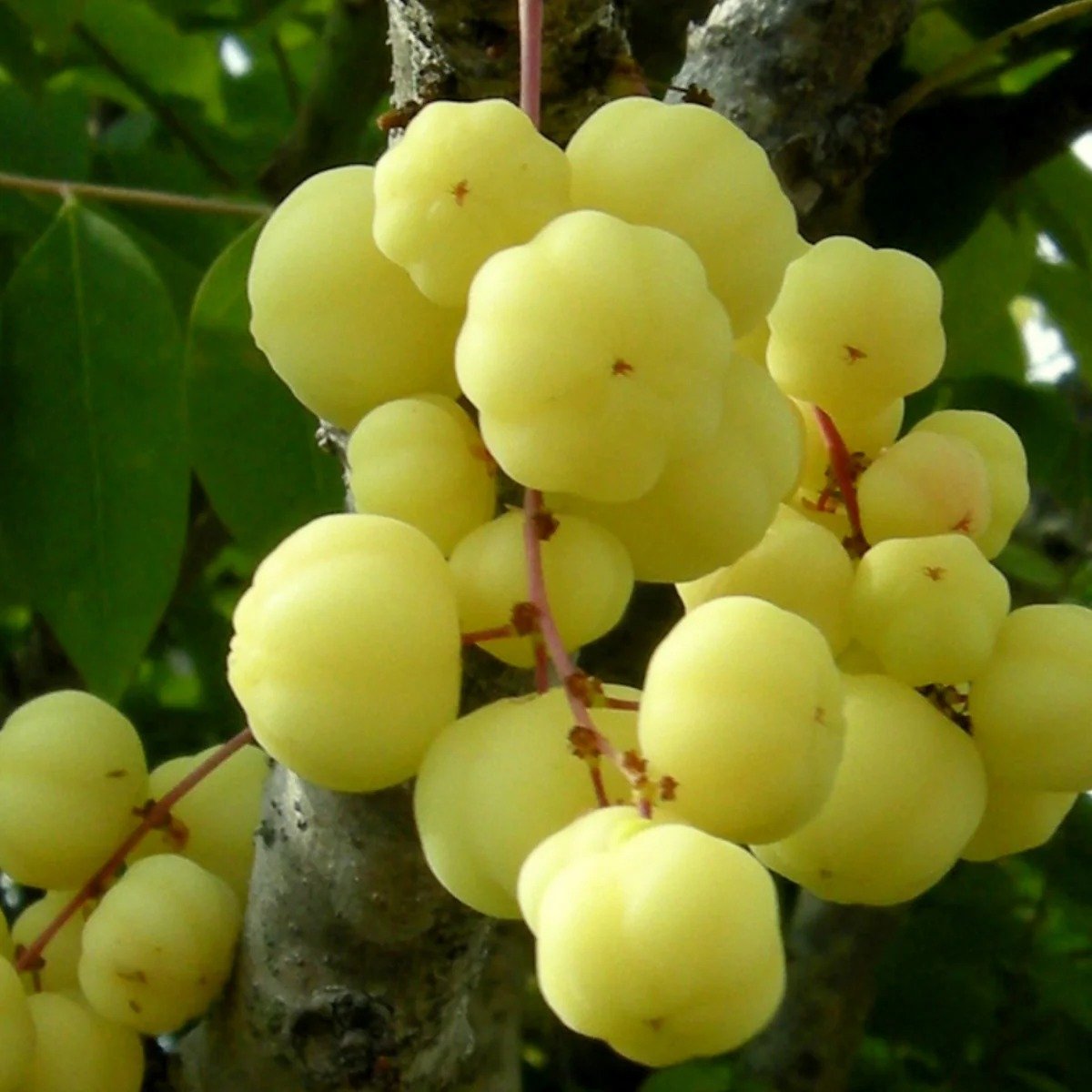
Here’s a concise information chart about Otaheite Gooseberry:
| Aspect | Information |
|---|---|
| Name | Otaheite Gooseberry |
| Scientific Name | Phyllanthus acidus |
| Common Names | Star gooseberry, Tahitian gooseberry, West Indian gooseberry |
| Origin | Tropical regions, including Southeast Asia and the Pacific Islands |
| Family | Phyllanthaceae |
| Appearance | Small, round fruit with five distinct ribs and a translucent, pale yellow-green color |
| Taste | Tart and slightly sour, with hints of sweetness |
| Season | Typically fruits in late summer to early autumn |
| Uses | Eaten fresh, used in jams, jellies and beverages; also used in traditional medicine |
| Cultivation | Grows in tropical climates, prefers well-drained soil and ample sunlight |
| Health Benefits | Rich in Vitamin C and antioxidants, supports immune function and aids digestion |
| Fun Fact | Otaheite gooseberry is used in various cuisines around the world, particularly in Southeast Asian and Caribbean dishes. |
Native to the Pacific Islands, the Otaheite gooseberry is a tropical treat with a unique flavor and appearance. These small, oval-shaped fruits have a thin, papery skin that ranges from green to yellow, revealing a juicy, translucent white flesh speckled with tiny seeds. The taste of the Otaheite gooseberry is a delightful blend of sweet and tart, with hints of pineapple and strawberry. They are often used in jams, pies, and other desserts, adding a tropical twist to any dish.
10. Ogeechee Lime
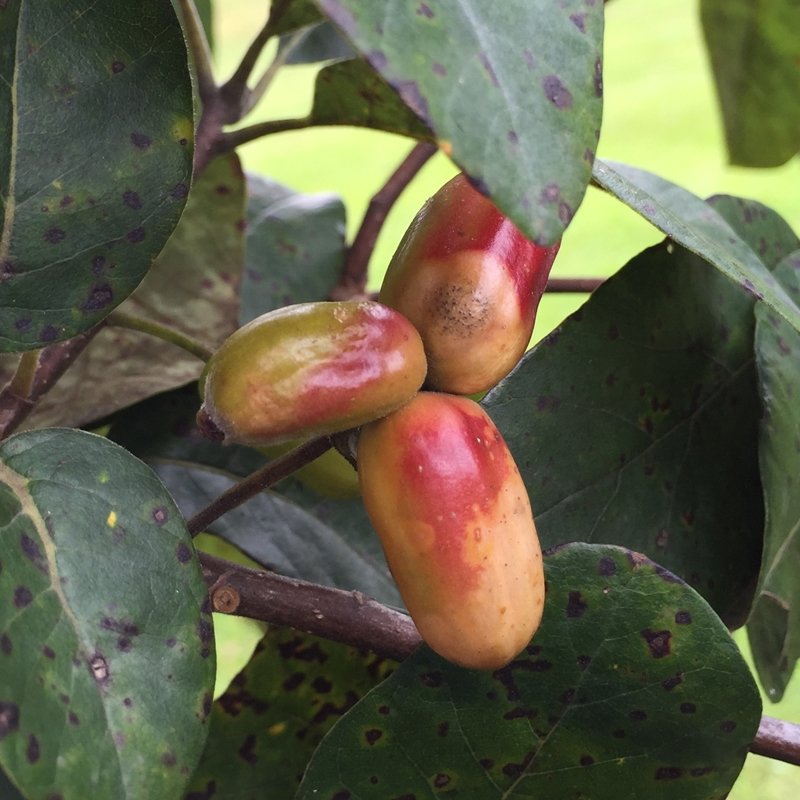
Here’s a concise information chart about Ogeechee Lime fruit:
| Aspect | Information |
|---|---|
| Name | Ogeechee Lime |
| Scientific Name | Nyssa ogeche |
| Family | Cornaceae |
| Native to | Southeastern United States, particularly Georgia |
| Appearance | Small, round fruit with a greenish-yellow skin |
| Taste | Tart and sour, with a slightly bitter aftertaste |
| Season | Typically fruits in late summer to early autumn |
| Uses | Traditionally used to make jams, jellies, and beverages; also used in pies and desserts |
| Cultivation | Grows in wetlands and along riverbanks, prefers moist, acidic soil and full sunlight |
| Health Benefits | Rich in antioxidants and Vitamin C, supports heart health and aids digestion |
| Fun Fact | Ogeechee Lime is primarily known for its use in making Ogeechee limespread, a traditional Southern delicacy. |
The fruit of the Ogeechee Lime tree, also known as Nyssa ogeche, is small and tart, resembling a small lime. It is prized for its culinary uses and is often used in jams, jellies, and beverages due to its unique flavor profile.
The world of “O” fruits is a delightful and diverse one, offering a range of flavors and culinary possibilities. From familiar citrus fruits like oranges and grapefruits to exotic delights such as olallieberries and Oriental persimmons, there’s an “O” fruit for every taste and occasion. We hope this comprehensive list has inspired you to explore new flavors, expand your culinary creations, and perhaps even add some unique “O” fruits to your garden or shopping list. Remember, when it comes to fruits, variety is the spice of life!

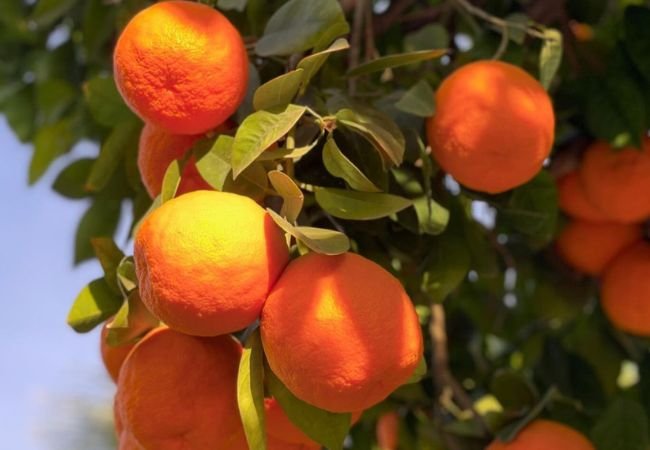






Leave a Reply